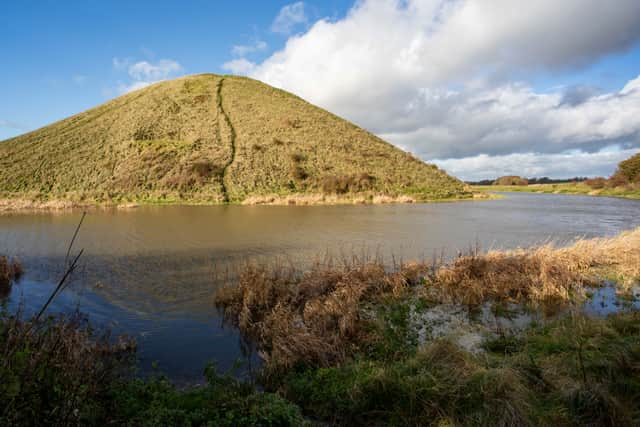Heavy rainfall in Wiltshire creates moat around 4,000-year-old man-made hill seen in stunning images


Heavy rain in the UK has brought a prehistoric man-made hill that dates back around 4,000 years back into the spotlight. A moat was created around Silbury Hill - the largest artificial mound in Europe - due to heavy rainfall.
Silbury Hill is a 40m chalk site at the Avebury World Heritage Site in Wiltshire. Downpours have seen a large horse-shoe-shaped lake formed around the hill - making it look like an ancient fort or motte and bailey castle. Archaeologists know little about the purpose of the mound but it is believed that it took around 18 million man-hours to build it - likely by hand.


Advertisement
Hide AdAdvertisement
Hide AdThe hill was probably completed in around 2400 BC. It is part of the complex of Neolithic monuments around Avebury, which includes the Avebury Ring and West Kennet Long Barrow. Several other Neolithic monuments in Wiltshire cared for by English Heritage, including the large henges at Marden and Stonehenge, could be culturally or functionally related to Avebury and Silbury.
The design has previously been compared to the ancient Egyptian pyramids, which were built around a century earlier. Tim Daw, local expert on ancient monuments, told the BBC it is possible when the mound was built it featured the moat as a permanent feature - as the water table was much higher then than it is today.
English Heritage's senior properties curator Win Scott says that the moat is known to form seasonally and will naturally drain away over time. Flooding at the site has occurred most recently in 2000, 2007 and 2013, and does not prevent visitors from viewing or accessing the site.
Comment Guidelines
National World encourages reader discussion on our stories. User feedback, insights and back-and-forth exchanges add a rich layer of context to reporting. Please review our Community Guidelines before commenting.